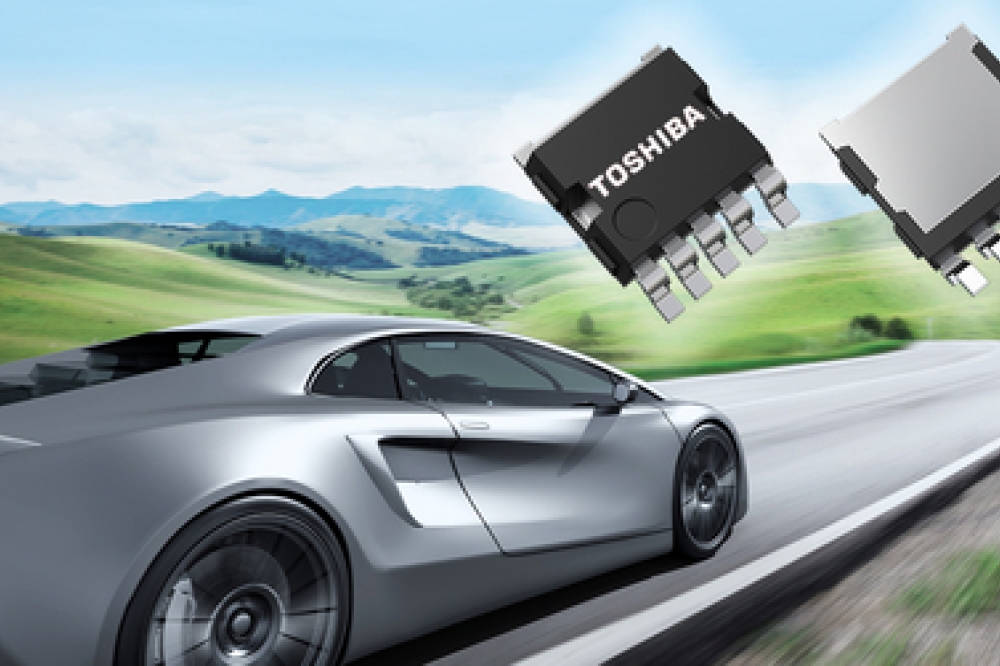Toshiba announces new 40V n-channel MOSFETs

New chips improve heat dissipation and reduce size of automotive equipment
Toshiba has launched two automotive 40V N-channel power MOSFETs, XPJR6604PB and XPJ1R004PB, that use Toshiba’s new S-TOGL (Small Transistor Outline Gull-wing Leads) package with U-MOS IX-H process chips.
Safety-critical applications like autonomous driving systems ensure reliability through redundant design, with the result that they integrate more devices and require more mounting space than standard systems. Accordingly, advancing size reductions in automotive equipment requires power MOSFETs that can be mounted at high current densities.
XPJR6604PB and XPJ1R004PB use Toshiba’s new S-TOGL package (7.0mm×8.44mm) which features a post-less structure unifying the source connective part and outer leads. A multi-pin structure for the source leads decreases package resistance.
The combination of the S-TOGL package and Toshiba's U-MOS IX-H process achieve a significant On-resistance reduction of 11 percent against Toshiba's TO-220SM (W) package product, which has the same thermal resistance characteristics.
The new package also cuts the required mounting area by approximately 55 percent against the TO-220SM(W) package. On top of this, the 200A drain current rating of the new package is higher than Toshiba’s similarly sized DPAK + package (6.5mm×9.5mm), enabling high current flow. Overall, the S-TOGL package realises high-density and compact layouts, reduces the size of automotive equipment, and contributes to high heat dissipation.
Since automotive equipment is used in extreme temperature environments, the reliability of surface mounting solder joints is a critical consideration. The S-TOGL package uses gull-wing leads that reduce mounting stress, improving the reliability of the solder joint.
Assuming that multiple devices will be connected in parallel for applications requiring higher-current operation, Toshiba supports grouping shipment for the new products, in which the gate threshold voltage is used for grouping. This allows designs using product groups with small characteristic variation.


































